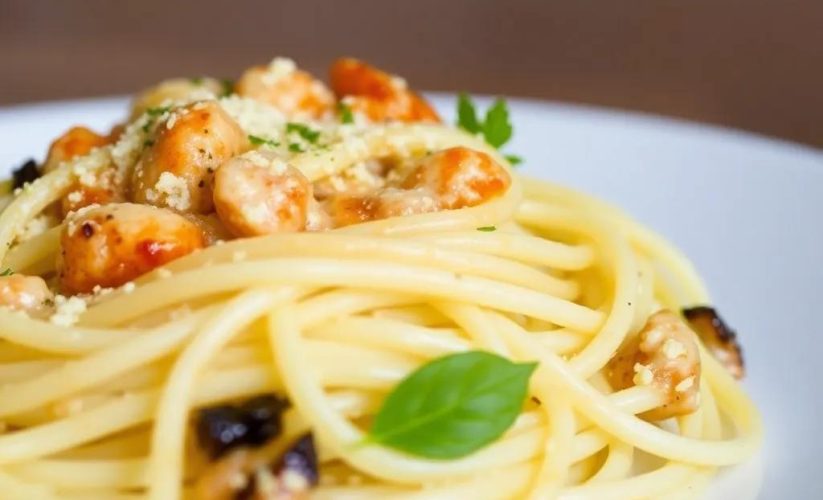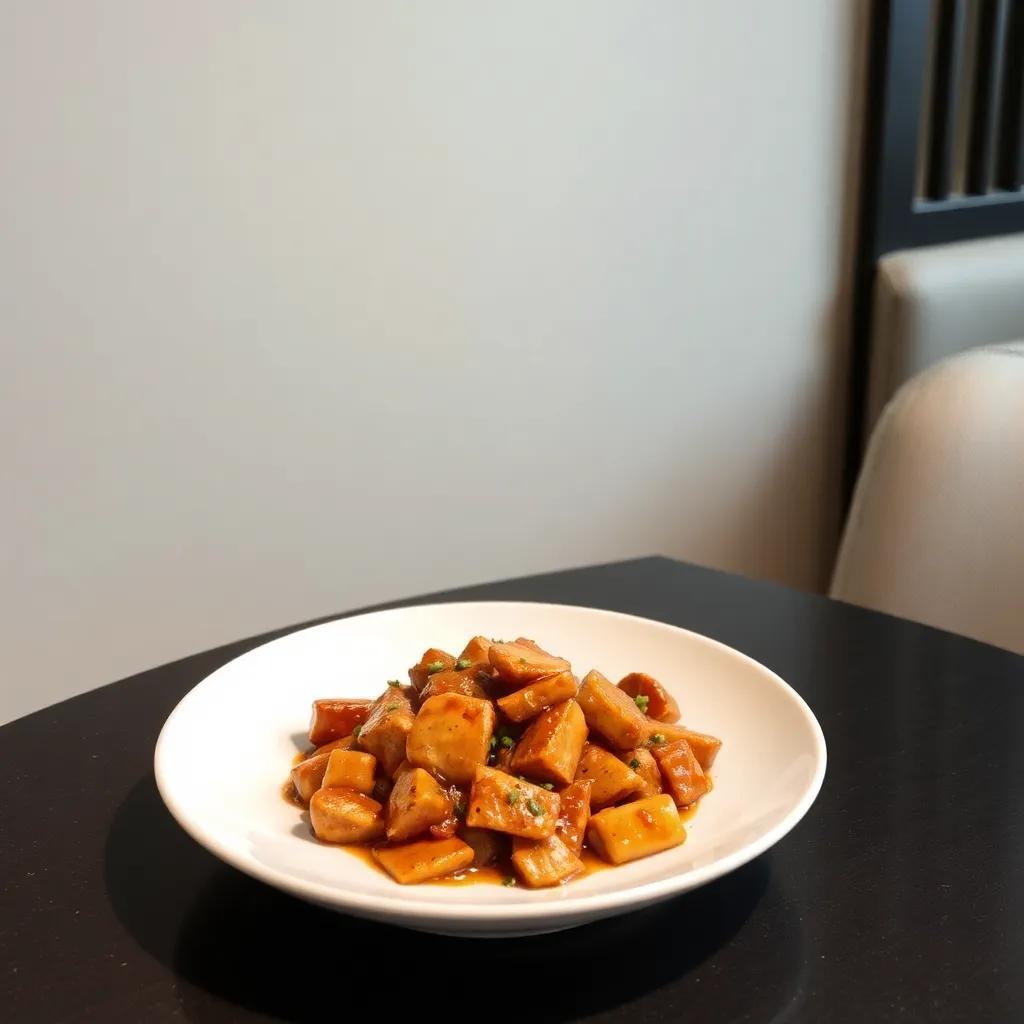Savor the Perfect Hot and Sour Soup: Easy, Zesty & Vegan-Friendly
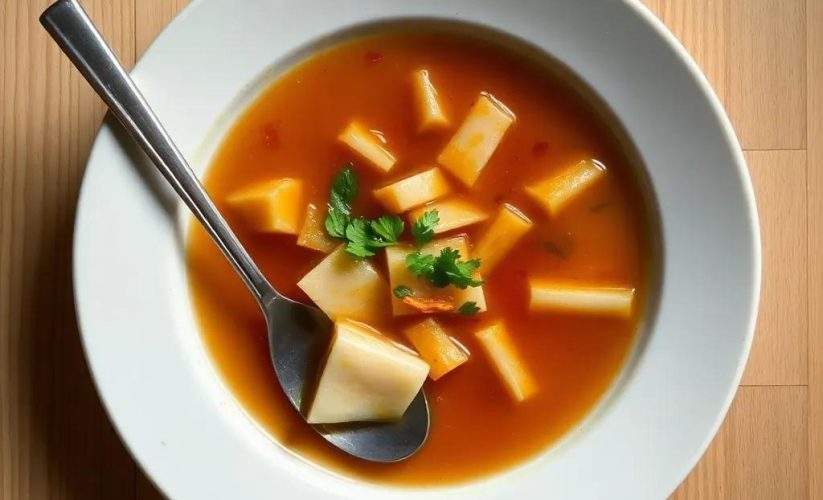
Savor the Perfect Hot and Sour Soup: Easy, Zesty & Vegan-Friendly
🌍 Cuisine: Chinese
⚙️ Difficulty: Easy
Ingredients
Nutrition Facts
110 kcal
Instructions
- In a large pot, bring the vegetable broth to a gentle boil over medium-high heat.
- Add sliced shiitake mushrooms (and soaked wood ear mushrooms if using) and bamboo shoots to the broth; simmer for 5 minutes to soften.
- Stir in the diced tofu and gently mix to avoid breaking it. Let cook for 3 minutes.
- Add soy sauce, rice vinegar, chili garlic sauce, grated ginger, minced garlic, white pepper, and salt to the pot. Stir well to combine all flavors.
- In a small bowl, whisk together the cornstarch and water to create a slurry.
- Slowly pour the cornstarch slurry into the simmering soup while stirring constantly to thicken the soup evenly.
- Continue to cook for 2–3 minutes until the soup has thickened to your liking.
- Remove the pot from heat and stir in toasted sesame oil for a fragrant finish.
- Ladle soup into bowls and garnish with thinly sliced green onions.
- Serve hot and enjoy your zesty, vegan-friendly hot and sour soup!
Serving Suggestions
- Serve as a starter before a multi-course Asian-inspired meal.
- Pair with steamed jasmine rice and vegetable stir-fry for a complete vegan dinner.
- Top with freshly chopped cilantro or a squeeze of lime for extra brightness.
- Enjoy alongside crispy spring rolls for a satisfying appetizer combo.
- Add extra chili garlic sauce or Sriracha for more heat if desired.
- Serve in small cups for a warming appetizer at dinner parties or potlucks.
- Complement with a light cucumber salad to balance the soup’s zesty flavors.
Table of Contents

Intro
Warm, comforting, and bursting with vibrant flavors, this hot and sour soup is a true celebration of balance and simplicity. Designed to be both easy to prepare and wonderfully satisfying, it offers a perfect harmony of tangy zest and gentle heat that awakens the palate without overwhelming it. Whether you’re seeking a light appetizer to kick off a dinner or a soothing bowl to enjoy on a crisp evening, this vegan-friendly version brings the timeless charm of a classic Chinese favorite right to your kitchen.
What makes this soup especially exciting is how quickly it comes together without sacrificing depth of flavor—ideal for busy weeknights or casual gatherings where you want something nourishing yet impressive. Its versatility as a starter or a standalone snack means it can slip effortlessly into various occasions, from intimate meals to lively potlucks. Plus, its vibrant character makes every spoonful a little adventure, inviting you to savor a warm hug of spice and tang with every bite.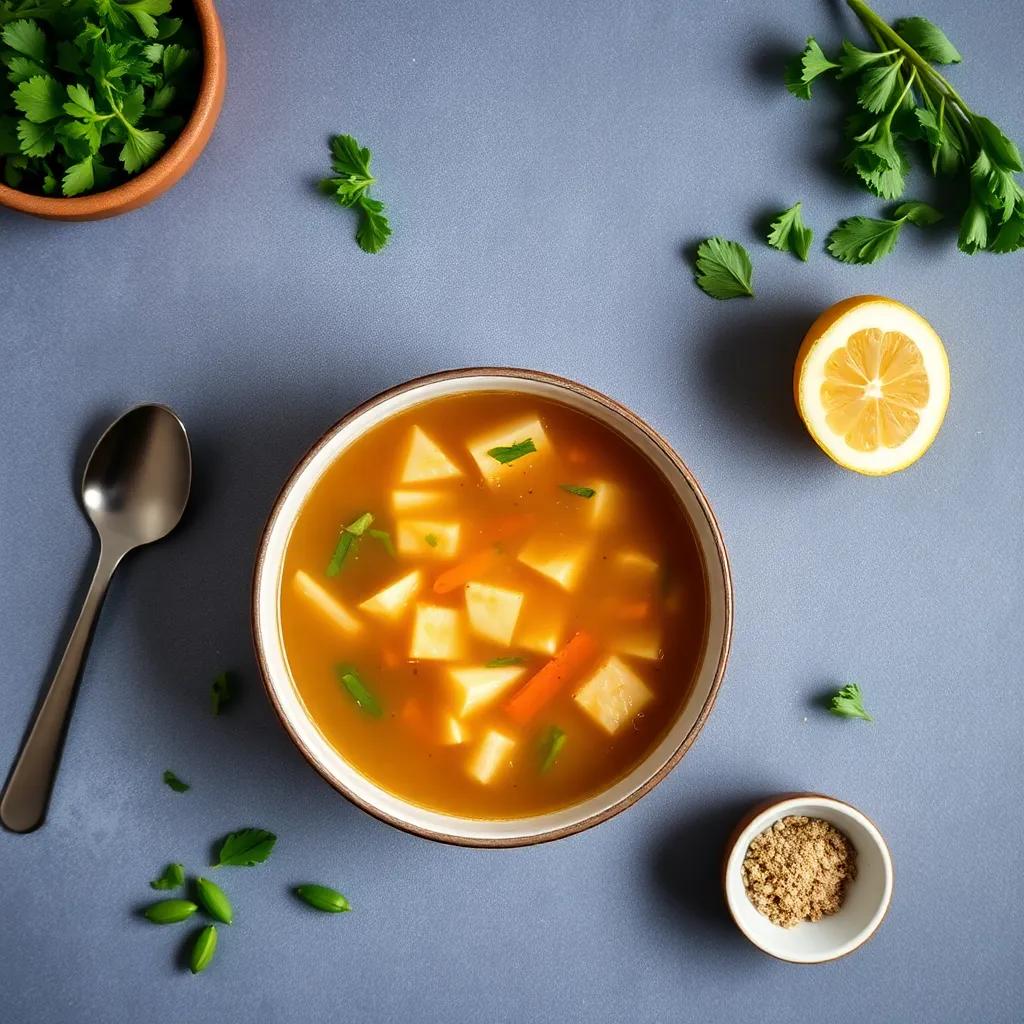
Ingredient Notes
When crafting the perfect hot and sour soup, a few key ingredients truly set this vegan-friendly version apart, lending authentic flavor and pleasing texture. Understanding these components helps ensure your soup tastes vibrant, balanced, and satisfying.
Shiitake Mushrooms: These mushrooms bring an earthy, umami-rich depth that anchors the soup’s flavor profile. Fresh shiitakes offer a meaty texture and subtly smoky notes, while dried shiitake mushrooms, if used, deliver an even more concentrated taste once rehydrated. When buying, look for firm, plump caps without blemishes. If fresh aren’t available, dried shiitakes are a pantry staple—just soak them in warm water for 20–30 minutes before slicing. For a different texture, you can also substitute cremini or button mushrooms, though you might lose some of that signature richness.
Firm Tofu: Tofu is the vegan protein superstar here, contributing both body and a silky texture. Choosing firm or extra-firm tofu helps it hold up during cooking without crumbling apart. Pressing the tofu to remove excess moisture before dicing ensures it absorbs the broth’s flavors better and prevents a watery soup. For added variety, silken tofu can be gently folded in near the end for a softer, more delicate mouthfeel, but handle carefully to maintain a smooth consistency.
Rice Vinegar: The zing that balances the soup’s heat and salt comes largely from rice vinegar, a mild and slightly sweet vinegar that complements Asian flavors beautifully. It adds that bright, tangy note without harsh acidity. When selecting rice vinegar, opt for unseasoned varieties to control the soup’s flavor precisely. If rice vinegar is not available, apple cider vinegar or white wine vinegar can be used sparingly as substitutes, but start with less and adjust to taste to avoid overpowering the dish.
Chili Garlic Sauce: This ingredient infuses the soup with its characteristic spicy kick and garlicky aroma. Brands vary in heat and sweetness, so pick one that matches your preferred level of spice. For a milder soup, reduce the amount or swap with a chili paste or hot sauce of your choice. Alternatively, fresh minced chili with a dash of garlic can be used for a more natural, customizable heat. This simple ingredient rounds out the soup’s bold personality, giving it that signature lively warmth.
Together, these ingredients create the vibrant soul of hot and sour soup—each playing a vital role in texture, aroma, and flavor harmony. Knowing how to select and handle them helps you savor every spoonful with confidence.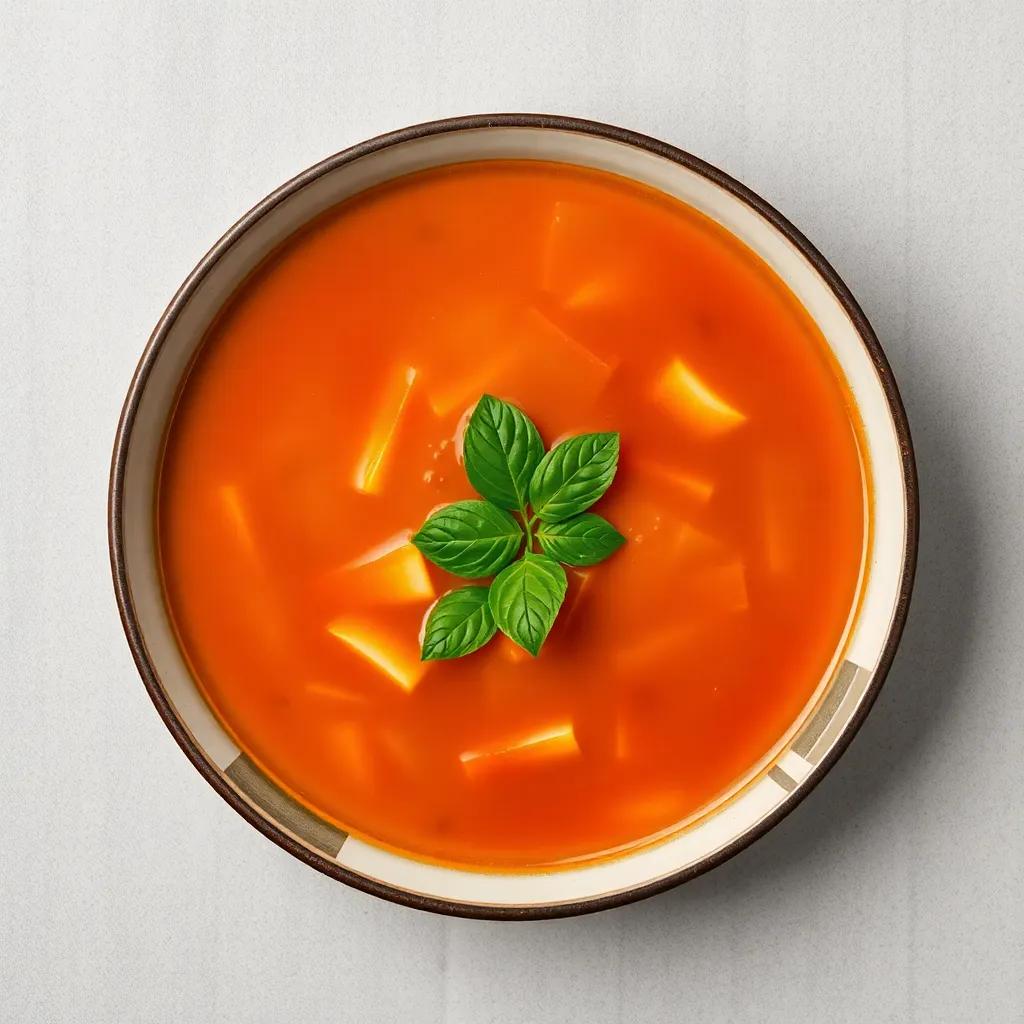
Tips & Variations
Mastering this hot and sour soup is as much about the technique and personal tweaks as it is about the core ingredients. Here are some tips and variations to elevate your soup game and customize it to your palate or dietary needs:
- Balance Your Heat and Tang: The hallmark of hot and sour soup is a delicate interplay of spicy and sour flavors. Start by adding chili garlic sauce and rice vinegar gradually, tasting as you go. This allows you to dial up or mellow the intensity to suit your preference. If you find the soup too sharp, a pinch of sugar or a splash of coconut milk can gently round out the flavors without losing that signature zest.
- Texture Tweaks: For an even heartier bowl, try incorporating finely shredded napa cabbage or julienned carrots alongside the mushrooms and bamboo shoots. These veggies add crunch and subtle sweetness that complement the tangy broth. Alternatively, swap the firm tofu for crispy pan-fried tofu cubes to add a satisfying bite contrast.
- Mushroom Magic: While shiitake and wood ear mushrooms offer authentic earthiness, you can experiment with other varieties like enoki, oyster, or even king trumpet mushrooms for different textures and umami notes. If dried mushrooms aren’t your thing, fresh mushrooms work beautifully and speed up prep.
- Gluten-Free Adjustments: This recipe can easily be gluten-free by using tamari instead of regular soy sauce. Double-check that your chili garlic sauce or any added condiments are also gluten-free, as some brands contain wheat.
- Enhance Umami Depth: Add a splash of mushroom soy sauce or a few drops of liquid smoke for a smoky undertone that deepens the broth. For a richer texture, stir in a small amount of miso paste just before serving—but keep in mind miso will add a salty note, so adjust the salt accordingly.
- Add Plant-Based Proteins: Besides tofu, incorporate sliced seitan or chickpea “noodles” for variation in protein texture and increase satiety. These ingredients can give your soup a more substantial feel while keeping it vegan.
- Fresh Herb Highlights: While green onions garnish with a mild bite, try adding fresh cilantro, Thai basil, or even a squeeze of lime juice right before serving to add brightness and a fresh herbal dimension.
- Adjusting Thickness: The cornstarch slurry controls how thick the soup becomes. For a lighter broth, use less slurry; for a more stew-like consistency, increase it slightly or add a touch more vegetable broth to thin it out if it becomes too thick.
- Make It a Meal: Toss in cooked glass noodles or thin rice noodles during the last few minutes of simmering to turn this vibrant appetizer into a fulfilling main dish, perfect for chilly evenings or when you want a comforting one-bowl meal.
By embracing these tips and variations, you can make this hot and sour soup uniquely yours—whether you prefer it mild or fiery, delicately textured or boldly hearty, always delicious and perfectly suited to your table.
Leftovers & Storage
Leftover hot and sour soup is a wonderful candidate for easy meal prep, allowing you to enjoy its vibrant flavors well beyond the initial serving. To keep your soup fresh and flavorful, it’s best to transfer any leftovers into airtight containers promptly once cooled to room temperature. Glass or BPA-free plastic containers with tight-fitting lids work perfectly to maintain freshness and prevent odor absorption from other foods in the fridge.
Stored properly, this soup will stay fresh in the refrigerator for up to 3 to 4 days. Because the broth contains tofu and delicate mushrooms, consuming it within this window ensures both safety and optimal taste. When reheating, gently warm the soup on the stovetop over medium-low heat, stirring occasionally to preserve the tofu’s texture and prevent overcooking. Avoid boiling vigorously again, as this can cause the tofu to break down or become spongy.
For longer storage, the soup freezes well. Portion it into freezer-safe containers or heavy-duty freezer bags, leaving some headspace to allow for expansion. Label with the date and freeze for up to 2 months. To thaw, move the soup to the refrigerator overnight, then reheat gently on the stove. Keep in mind that frozen tofu can become a bit firmer or slightly crumbly after freezing, which some might find adds an interesting texture contrast. If your soup thickened up during freezing, simply stir in a splash of vegetable broth or water when reheating to adjust consistency.
Because hot and sour soup is relatively light and brothy, it packs and travels nicely, making it an excellent choice for packing into lunch containers for work or school. Just be sure your container seals well to prevent leaks, and consider packing garnishes like fresh green onions separately to add just before eating for maximum freshness.
In summary:
– Cool leftovers before storing in airtight containers.
– Keep refrigerated for up to 4 days.
– Reheat gently without vigorous boiling to maintain texture.
– Freeze for up to 2 months in proper containers; thaw overnight in the fridge.
– Adjust thickness with broth after thawing if needed.
– Pack in leak-proof containers for convenient meals on the go, adding garnishes fresh.
With these tips, your hot and sour soup will remain a reliable, flavorful, and comforting option to enjoy anytime.
Behind the Recipe
Hot and sour soup is a beloved classic in Chinese cuisine, celebrated for its intriguing balance of flavors that awaken the senses. Its origins trace back centuries, with roots in Sichuan and Hunan provinces—regions known for bold, spicy dishes. Traditionally, hot and sour soup was a hearty offering in Chinese households and street stalls, crafted to invigorate both the palate and the spirit on cold or dreary days.
This vegan-friendly adaptation honors that heritage while embracing a modern, plant-based approach. By swapping out meat and eggs for tofu and mushrooms, the recipe captures the essence of the original: a lively interplay of heat, tang, and umami, all within a nourishing, accessible bowl. The choice to highlight shiitake and wood ear mushrooms, alongside firm tofu, pays homage to the textures and depths found in traditional versions, while the inclusion of chili garlic sauce and rice vinegar reaffirms the vibrant, punchy flavor profile.
On a personal note, this soup has long been a go-to comfort food in my kitchen—simple enough for busy weeknights yet always satisfying enough to feel special. Its quick assembly and adaptable ingredients invite creativity, whether you add your favorite mushrooms or adjust the spice to your liking. Each spoonful carries a story of culinary tradition meeting contemporary needs—a warm, welcoming taste of China’s rich food culture made easy and vegan-friendly for today’s tables.
FAQ
Can I substitute the mushrooms with another vegetable?
What’s the best way to store leftover hot and sour soup?
Is there a good protein option to add for extra heartiness?
Can I make this soup spicier or milder?
Is it possible to freeze hot and sour soup?
What’s a quick tip to balance the flavors perfectly?
Wrapping It Up
There’s something truly comforting about a bowl of hot and sour soup that’s both zesty and nourishing, especially when it’s entirely plant-based. This easy recipe strikes the perfect balance between tangy, spicy, and savory, making it an inviting dish for any day of the week. Whether you’re new to vegan cooking or a longtime fan, it’s a delicious way to warm up and savor bold flavors without fuss.
I’d love to hear how your version turns out! Feel free to leave a comment, share your rating, or tell me about any creative twists you’ve added to make it your own. Happy cooking, and here’s to many cozy bowls ahead!

